In our Timeline on this website, we show a coming Era of Peace or “period of peace”, as promised by Our Lady of Fatima (“the Woman clothed in the sun”), after the trials of these present times. According to the Early Church Fathers, they also foresaw a period of peace and justice on earth after the appearance of an Antichrist. This, they taught, was according to St. John’s Revelation, specifically chapters 19-20. In this vision, St. John sees a manifestation of Jesus’ power that destroys the Antichrist and culminates in a period of peace before the end of the world, as symbolized by a “thousand years”:
Then I saw the heavens opened, and there was a white horse; its rider was [called] “Faithful and True.” He judges and wages war in righteousness… The beast was caught and with it the false prophet who had performed in its sight the signs by which he led astray those who had accepted the mark of the beast and those who had worshiped its image. The two were thrown alive into the fiery pool burning with sulfur. The rest were killed by the sword that came out of the mouth of the one riding the horse… Then I saw an angel come down from heaven, holding in his hand the key to the abyss and a heavy chain. He seized the dragon, the ancient serpent, which is the Devil or Satan, and tied it up for a thousand years and threw it into the abyss, which he locked over it and sealed, so that it could no longer lead the nations astray until the thousand years are completed. After this, it is to be released for a short time. Then I saw thrones; those who sat on them were entrusted with judgment. I also saw the souls of those who had been beheaded for their witness to Jesus and for the word of God, and who had not worshiped the beast or its image nor had accepted its mark on their foreheads or hands. They came to life and they reigned with Christ for a thousand years. (Rev 19:11, 20-21; 20:1-4); Nota bene: this is clearly not the end of the world nor the Second Coming of Jesus that brings time and history to a close; read Rev 20:7-15 to see how it all ends, or go to our Timeline.
Unfortunately, the early Jewish converts expected Jesus to return in the flesh and reign for a literal thousand years. However, the Church quickly condemned that as the heresy of “millenarianism.” What the Church has never condemned, however, is the idea that this symbolic “thousand years” could represent a period of “triumph” in the Church. The following question on the scriptural foundation of an historic and universal era of peace, as opposed to millenarianism, was put to Cardinal Ratzinger (Pope Benedict XVI) when he was Prefect for the Congregation of the Doctrine of the Faith: “È imminente una nuova era di vita cristiana?” (“Is a new era of Christian life imminent?”). He replied, “La questione è ancora aperta alla libera discussione, giacchè la Santa Sede non si è ancora pronunciata in modo definitivo”:
The question is still open to free discussion, as the Holy See has not made any definitive pronouncement in this regard. —Il Segno del Soprannauturale, Udine, Italia, n. 30, p. 10, Ott. 1990; Fr. Martino Penasa presented this question of a “millenary reign” to Cardinal Ratzinger
Yet, many insist that St. Augustine’s interpretation (one of three) that the “thousand years” represents the time since Christ’s Ascension to the end of the world (amillenialism) is a “doctrine.” This is not true, as Cardinal Ratzinger made abundantly clear. On the contrary, summarizing the Church Fathers and a straight forward reading of Revelation, 19th century eschatologist Fr. Charles Arminjon (1824-1885) stated:
…if we study but a moment the signs of the present time, the menacing symptoms of our political situation and revolutions, as well as the progress of civilization and the increasing advance of evil, corresponding to the progress of civilization and the discoveries in the material order, we cannot fail to foresee the proximity of the coming of the man of sin, and of the days of desolation foretold by Christ… The most authoritative view, and the one that appears to be most in harmony with Holy Scripture, is that, after the fall of the Antichrist, the Catholic Church will once again enter upon a period of prosperity and triumph. —The End of the Present World and the Mysteries of the Future Life, Fr. Charles Arminjon (1824-1885), p. 56-58; Sophia Institute Press
Actually, St. Augustine agreed—so long as the heresy of millenarianism (a literal reign of Jesus on earth) was not taught:
…as if it were a fit thing that the saints should thus enjoy a kind of Sabbath-rest during that period [of a “thousand years”]… And this opinion would not be objectionable, if it were believed that the joys of the saints, in that Sabbath, shall be spiritual, and consequent on the presence of God… —St. Augustine of Hippo (354-430 A.D.; Church Doctor), De Civitate Dei, Bk. XX, Ch. 7, Catholic University of America Press
Thus, theologian Peter Bannister, one of the contributors to Countdown to the Kingdom, says amillennialism is simply untenable:
…I am now thoroughly convinced that amillennialism is not only not dogmatically binding but actually a huge mistake (like most attempts throughout history to sustain theological arguments, however sophisticated, that fly in the face of a plain reading of Scripture, in this case Revelation 19 and 20). Perhaps the question really didn’t matter all that much in previous centuries, but it certainly does now… I cannot point to a single credible [prophetic] source that upholds Augustine’s eschatology. Everywhere it is rather affirmed that what we are facing sooner rather than later is the Coming of the Lord (understood in the sense of a dramatic manifestation of Christ, not in the condemned millenarian sense of a physical return of Jesus to rule bodily over a temporal kingdom) for the world’s renewal—not for the Final Judgment/end of the planet…. The logical implication on the basis of Scripture of stating that the Coming of the Lord is ‘imminent’ is that, so too, is the coming of the Son of Perdition. I don’t see any way whatsoever around this. Again, this is confirmed in an impressive number of heavyweight prophetic sources…
The Catechism of the Catholic Church states:
The Antichrist’s deception already begins to take shape in the world every time the claim is made to realize within history that messianic hope which can only be realized beyond history through the eschatological judgment. The Church has rejected even modified forms of this falsification of the kingdom to come under the name of millenarianism,577 especially the “intrinsically perverse” political form of a secular messianism.578 —n. 676
The footnote references nos. 577, 578 are crucial in helping us understand what is meant by “millenarianism”, and secondly, “secular messianism” in the Catechism. Footnote 577 is a reference to Denzinger-Schonnmetzer’s work (Enchiridion Symbolorum, definitionum et declarationum de rebus fidei et morum). Denzinger’s work traces the development of doctrine and dogma in the Catholic Church from its earliest times, and is obviously seen as a credible enough source for the Catechism to quote. The footnote to “millenarianism” leads us to Denzinger’s work, which states:
…the system of mitigated Millenarianism, which teaches, for example, that Christ the Lord before the final judgment, whether or not preceded by the resurrection of the many just, will come visibly to rule over this world. The answer is: The system of mitigated Millenarianism cannot be taught safely. —DS 2269/3839, Decree of the Holy Office, July 21, 1944
In conclusion, Fr. Leo J. Trese in The Faith Explained summarizes:
Those who do take [Rev 20:1-6] literally and believe that Jesus will come to reign upon earth for a thousand years before the end of the world are called millenarists. —p. 153-154, Sinag-Tala Publishers, Inc. (with the Nihil Obstat and Imprimatur)
Renowned Catholic theologian, Cardinal Jean Daniélou, also explains that:
Millenarianism, the belief that there will be an earthly reign of the Messiah before the end of time, is the Jewish-Christian doctrine which has aroused and continues to arouse more argument than any other. —A History of Early Christian Doctrine, p. 377
He adds, “The reason for this, however, is probably a failure to distinguish between the various elements of doctrine,” —which is what we are doing here.
Footnote 578 brings us to the document Divini Redemptoris, Pope Pius XI’s Encyclical against Atheistic Communism. While the millenarians held to some form of a utopian earthly-spiritual kingdom, secular messianists hold to a utopian political kingdom.
The Communism of today, more emphatically than similar movements in the past, conceals in itself a false messianic idea. —POPE PIUS XI, Divini Redemptoris, n. 8, www.vatican.va
Thus, what we propose on this website, in our webcasts, writings, and books is not the heresy of millenarianism, but exactly what the papal theologian for Pius XII, John XXIII, Paul VI, John Paul I, and John Paul II said:
Yes, a miracle was promised at Fatima, the greatest miracle in the history of the world, second only to the Resurrection. And that miracle will be an era of peace, which has never really been granted before to the world. —Cardinal Mario Luigi Ciappi, October 9th, 1994; from the Family Catechism, p. 35, which he said is “a sure source for authentic Catholic doctrine” (Sept. 9th, 1993)
Note: Mark Mallett’s book The Final Confrontation, which explains the Era of Peace and differentiates it from the old heresy of millenarianism, just received Nihil Obstat from his bishop.[1]cf. Nihil Obstat Granted
For a deeper look at the teachings of the Catechism and other doctrinal statements on this subject, see Millenarianism – What It is and is Not by Mark Mallett at The Now Word. See also Prof. Daniel O’ Connor’s clear and concise arguments against those who level this charge of heresy against the Church Fathers, popes and mystics of the Church who have all prophesied the coming Era of Peace. Read The Crown of Sanctity downloadable for free on Kindle here.
The more noteworthy of the prophecies bearing upon “latter times”
seem to have one common end,
to announce great calamities impending over mankind,
the triumph of the Church,
and the renovation of the world.
—Catholic Encyclopedia, Prophecy, www.newadvent.org
Watch Daniel O’Connor’s webcast refuting those who claim
the Era of Peace is not solid Catholic teaching:
Footnotes
| ↑1 | cf. Nihil Obstat Granted |
|---|



 Alicja Lenczewska
Alicja Lenczewska

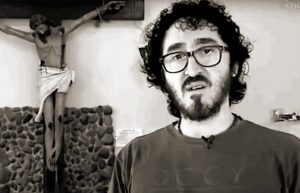

 Elizabeth Kindelmann
Elizabeth Kindelmann Through what became The Spiritual Diary, Jesus and Mary taught Elizabeth, and they continue to instruct the faithful in the divine art of suffering for the salvation of souls. Tasks are assigned for each day of the week, which involve prayer, fasting, and night vigils, with beautiful promises attached to them, laced with special graces for priests and the souls in purgatory. In their messages, Jesus and Mary say that The Flame of Love of the Immaculate Heart of Mary is the greatest grace given to mankind since the Incarnation. And in the not-so-distant future, her flame will engulf the entire world.
Through what became The Spiritual Diary, Jesus and Mary taught Elizabeth, and they continue to instruct the faithful in the divine art of suffering for the salvation of souls. Tasks are assigned for each day of the week, which involve prayer, fasting, and night vigils, with beautiful promises attached to them, laced with special graces for priests and the souls in purgatory. In their messages, Jesus and Mary say that The Flame of Love of the Immaculate Heart of Mary is the greatest grace given to mankind since the Incarnation. And in the not-so-distant future, her flame will engulf the entire world. Father Stefano Gobbi
Father Stefano Gobbi Why Gisella Cardia?
Why Gisella Cardia? Thirdly, the messages have frequently been accompanied by visible phenomena, photographic evidence found in In Cammino con Maria, which cannot be the fruit of subjective imagination, notably the presence of the stigmata on Giselle’s body and and the appearance of crosses or religious texts in blood on Gisella’s arms. See the pictures taken from her apparition website
Thirdly, the messages have frequently been accompanied by visible phenomena, photographic evidence found in In Cammino con Maria, which cannot be the fruit of subjective imagination, notably the presence of the stigmata on Giselle’s body and and the appearance of crosses or religious texts in blood on Gisella’s arms. See the pictures taken from her apparition website 
 Jennifer
Jennifer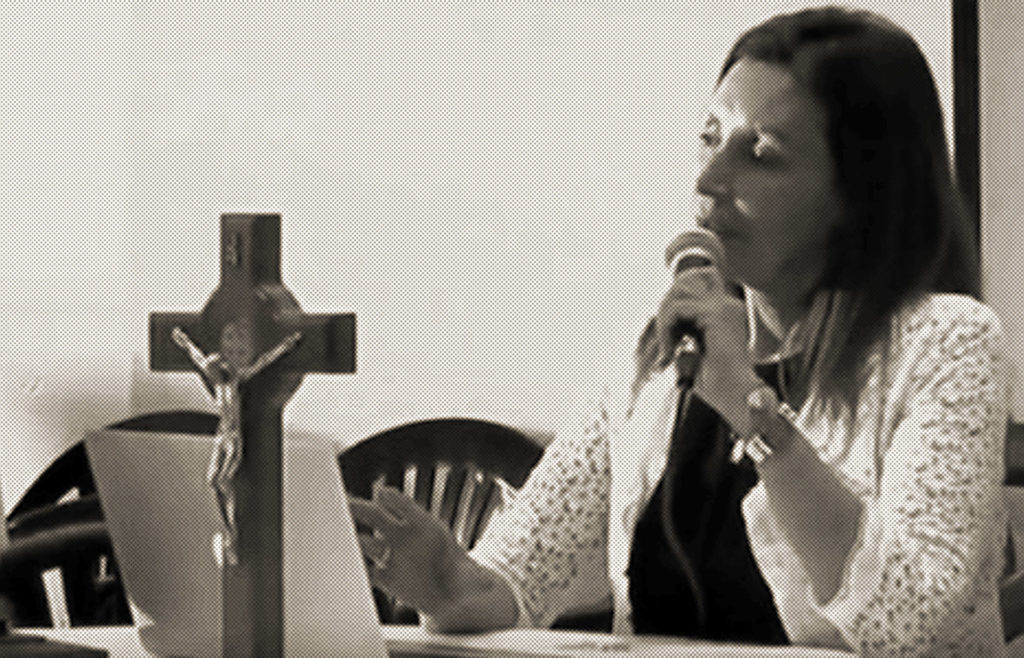
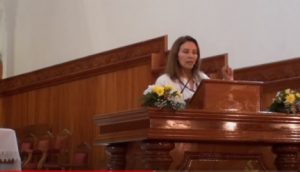
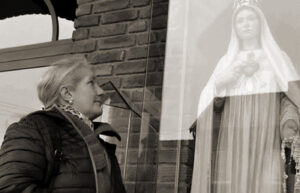 Why Manuela Strack?
Why Manuela Strack?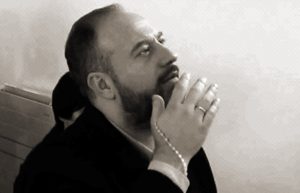

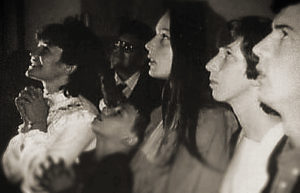 Why the Visionaries of Our Lady of Medjugorje?
Why the Visionaries of Our Lady of Medjugorje? Why Pedro Regis?
Why Pedro Regis? Why the Servant of God Luisa Piccarreta?
Why the Servant of God Luisa Piccarreta?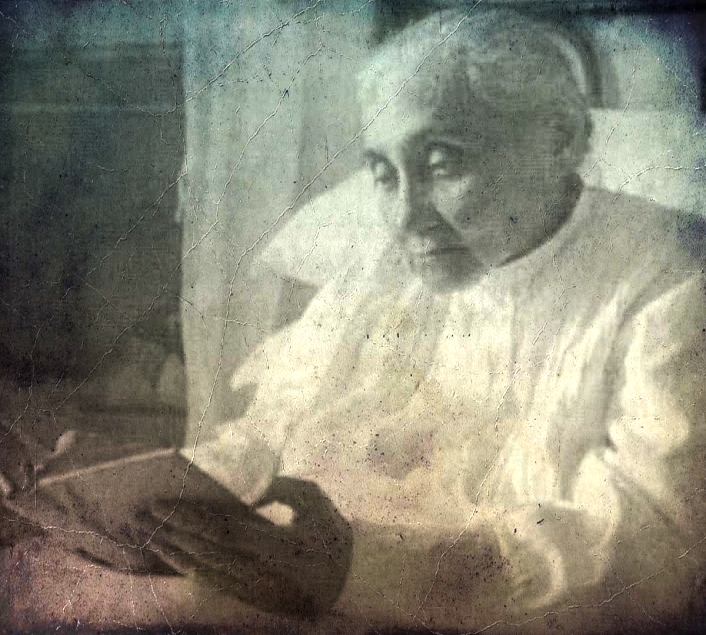 of the saints. It wasn’t until she became a “Daughter of Mary” that the nightmares finally ceased at the age of eleven. In the following year, Jesus began to speak interiorly to her especially after receiving Holy Communion. When she was thirteen, He appeared to her in a vision that she witnessed from the balcony of her home. There, in the street below, she saw a crowd and armed soldiers leading three prisoners; she recognized Jesus as one of them. When He arrived beneath her balcony, He raised his head and cried out: “Soul, help Me!” Deeply moved, Luisa offered herself from that day on as a victim soul in expiation for the sins of mankind.
of the saints. It wasn’t until she became a “Daughter of Mary” that the nightmares finally ceased at the age of eleven. In the following year, Jesus began to speak interiorly to her especially after receiving Holy Communion. When she was thirteen, He appeared to her in a vision that she witnessed from the balcony of her home. There, in the street below, she saw a crowd and armed soldiers leading three prisoners; she recognized Jesus as one of them. When He arrived beneath her balcony, He raised his head and cried out: “Soul, help Me!” Deeply moved, Luisa offered herself from that day on as a victim soul in expiation for the sins of mankind. immobile, rigid-like state that appeared almost as if she were dead. It was only when a priest made the sign of the Cross over her body that Luisa regained her faculties. This remarkable mystical state persisted until her death in 1947—followed by a funeral that was no little affair. During that period in her life, she suffered no physical illness (until she succumbed to pneumonia at the end) and she never experienced bedsores, despite being confined to her little bed for sixty-four years.
immobile, rigid-like state that appeared almost as if she were dead. It was only when a priest made the sign of the Cross over her body that Luisa regained her faculties. This remarkable mystical state persisted until her death in 1947—followed by a funeral that was no little affair. During that period in her life, she suffered no physical illness (until she succumbed to pneumonia at the end) and she never experienced bedsores, despite being confined to her little bed for sixty-four years. Why Simona and Angela?
Why Simona and Angela?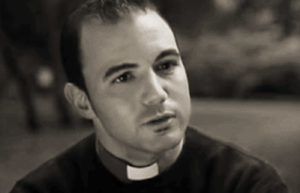
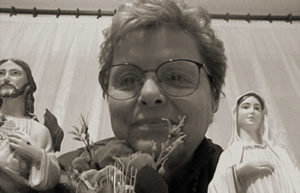 Valeria Copponi
Valeria Copponi